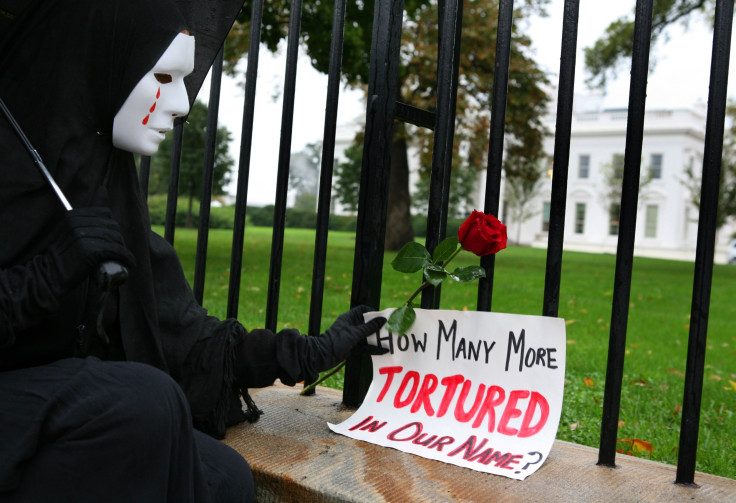CIA Torture Songs: How Music Was Used To Create A 'Sense Of Hopelessness'

The Senate Intelligence Committee's CIA torture report details how the agency used various "enhanced interrogation techniques" in detention facilities in the wake of the Sept. 11, 2001, terrorist attacks on the U.S. One of the most pervasive techniques, the report says, was the use of music and noise to disorient detainees, signal the start of interrogations or to create a "sense of hopelessness."
"Conditions at CIA detention sites were poor, and were especially bleak early in the program. CIA detainees at the COBALT detention facility were kept in complete darkness and constantly shackled in isolated cells with loud noise or music and only a bucket to use for human waste," reads the report's description of one site.
The torture report includes accounts of how Abu Zubaydah, a detainee, was treated. Zubaydah was waterboarded, deprived of sleep and "walled" under the assumption that he was withholding information on planned al Qaeda terrorist attacks. The interrogation techniques led to poor health and Zubaydah was ultimately hospitalized and later moved to a detention facility. The report says:
"A cable described Abu Zubaydah's cell as white with no natural lighting or windows, but with four halogen lights pointed into the cell. An air conditioner was also in the room. A white curtain separated the interrogation room from the cell. The interrogation cell had three padlocks. Abu Zubaydah was also provided with one of two chairs that were rotated based on his level of cooperation (one described as more comfortable than the other). Security officers wore all black uniforms, including boots, gloves, balaclavas and goggles to keep Abu Zubaydah from identifying the officers, as well as to prevent Abu Zubaydah "from seeing the security guards as individuals who he may attempt to establish a relationship or dialogue with.” The security officers communicated by hand signals when they were with Abu Zubaydah and used handcuffs and leg shackles to maintain control. In addition, either loud rock music was played or noise generators were used to enhance Abu Zubaydah's "sense of hopelessness." Abu Zubaydah was typically kept naked and sleep deprived."
Loud music played 24 hours a day was authorized for detainees and would often signal the start of an interrogation. White noise was also used to create sensory deprivation and hallucinations. The CIA torture report does not mention specific songs, but Andy Worthington, author of "The Guantanamo Files," outlined some of the more popular songs used against detainees.
"Hit Me Baby One More Time" by Britney Spears was a popular song to play continuously, notes Worthington. "You lose the plot and it's very scary to think that you might go crazy because of all the music, because of the loud noise, and because after a while you don't hear the lyrics at all, all you hear is heavy banging," Ruhal Ahmed, a released Guantanamo prisoner, explained to Worthington.
There was no specific playlist, and soldiers regularly chose offensive songs or heavy metal, a genre of music unfamiliar to most detainees. Rapper Eminem's "Slim Shady" album and songs by Metallica, Nine Inch Nails and Queen's "We Will Rock You" were also used to torture detainees. Even the theme songs for "Barney & Friends" and "Sesame Street" were played on a loop at Guantanamo.
Trent Reznor of Nine Inch Nails condemned the practice when he heard his songs were being used as a form of torture. "It’s difficult for me to imagine anything more profoundly insulting, demeaning and enraging than discovering music you’ve put your heart and soul into creating has been used for purposes of torture," Reznor wrote in a blog post.
A selection of songs mentioned by Worthington can be streamed below.
© Copyright IBTimes 2025. All rights reserved.






















